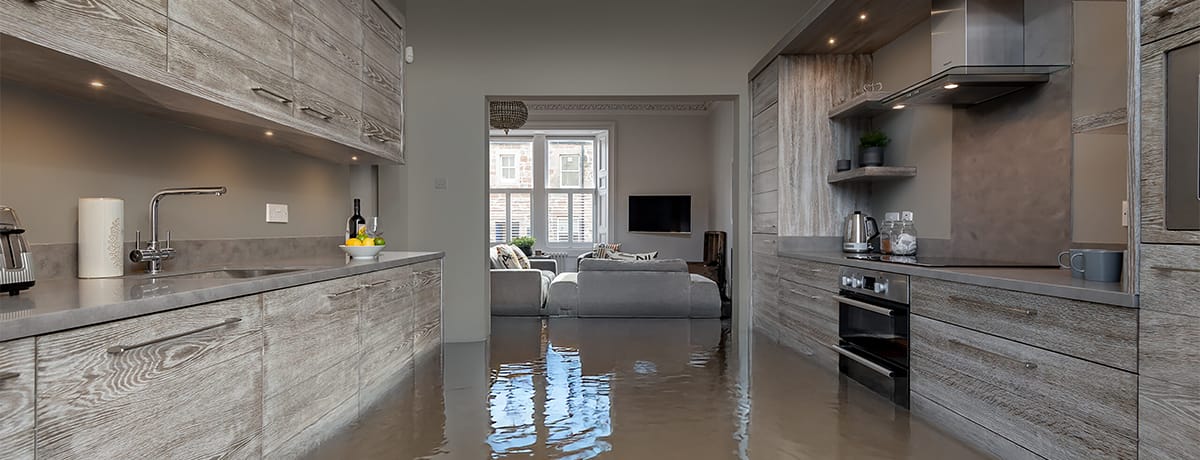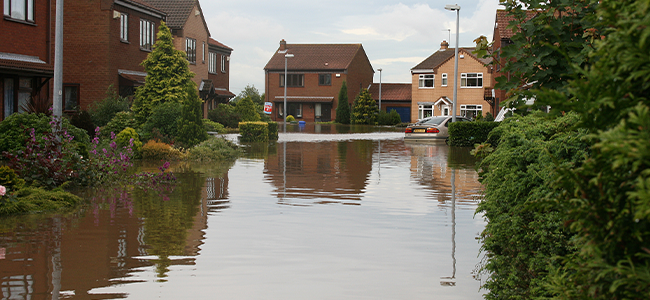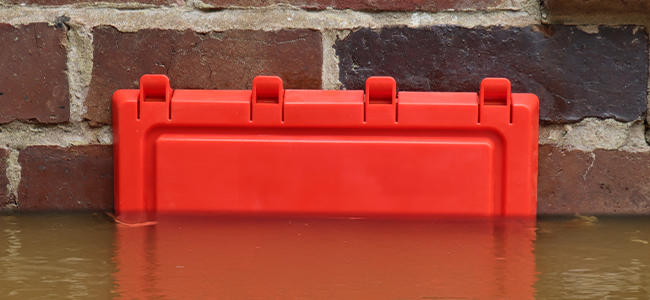
Building Flood Resilience: A Trade Guide for Flood Action Week
Published on October 13, 2025
Posted in Advice & Reviews
by MKM
3 mins min read
As we mark Flood Action Week, there's never been a more crucial time for the trade to step up and help communities prepare for flooding. With 6.3 million properties in England already at flood risk, rising to eight million by 2050, your expertise could be the difference between a quick recovery and months of disruption for your customers.
Surface water flooding is becoming increasingly common, affecting areas that have never flooded before. But here's the thing: as professionals in construction and building supply, you're perfectly positioned to make a real difference. It's not just about reacting to floods anymore it’s about building resilience from the ground up.
"Being flooded is an appalling experience, but the real hardship is in the months of recovery that follow. By thinking about flood resilience before disaster strikes, trades can make that journey shorter and less painful," explains Mary Dhonau, Flood Resilience Campaigner.

Reduce: Managing Surface Water and Runoff
Your first line of defence starts outside the property. By managing how water behaves on site, you can reduce surface water runoff and take pressure off already strained drainage systems.
For landscapers, builders, and groundworkers, consider these practical upgrades:
- Permeable paving and gravel driveways: Allow water to soak through rather than rush into drains
- Natural grass over artificial: Real grass and planting naturally absorb and slow rainfall
- ACO or channel drains: Direct water safely away from building foundations
- Water butts and attenuation crates: Store rainwater temporarily during heavy downpours
- Regular maintenance: Keep gullies and drains clear, simple but vital
These aren't just technical improvements, they're selling points. Customers appreciate trades who think ahead, and small changes at property level create big benefits community-wide.
Resist: Stopping Water at the Threshold
Physical defences are your second line of protection. For builders, plumbers, and general trades, the right products can stop floodwater before it enters the building.
Key defensive measures include:
- Flood doors and demountable barriers: Prevent direct water ingress at entry points
- Self-closing airbricks or covers: Automatically seal when floodwater rises
- Non-return valves: Stop backflow from overwhelmed drains and sewers
- Waterproof mortar: Repoint damaged areas to prevent seepage through brickwork
- Quality silicone sealing: Protect service pipe entry points and wall penetrations
Even simple interventions like upgrading standard airbricks or adding non-return valves can save customers thousands in damage. As Mary Dhonau puts it: "Simple solutions like airbrick covers or non-return valves make a massive difference. It's about using your trade skills to think ahead."

Resilience: Designing for Recovery
No flood defence is perfect, but smart design helps homes bounce back faster. Whether you're a builder, electrician, or kitchen fitter, you can incorporate flood-resilient features into every project.
Build back better with these approaches:
- Horizontal plasterboard installation: Only lower sections need replacing after flooding
- Waterproof flooring options: Tiles with waterproof adhesive or LVT flooring
- Closed-cell insulation: Resists water absorption and speeds drying
- Plastic or ceramic skirting: Or extend wall tiles to mimic skirting boards
- Separate electrical circuits: Keep power in parts of the property post-flood
- Elevated appliances: Raise integrated appliances on plinths or install higher
- Membrane and sump systems: Channel and remove water entering through walls or floors
These changes don't compromise aesthetics, today's waterproof materials look fantastic while providing essential protection.
React: When Flooding Strikes
When flooding threatens, preparation and speed matter most. Help your customers create response plans and keep the right equipment ready.
Essential rapid-response kit:
- Flood bags: Compact and lightweight compared to traditional sandbags
- Sump or puddle pumps: Remove water down to just 2mm depth
- Plugs and toilet bungs: Prevent dirty water backflow
- Elevation materials: Spare blocks or bricks to raise furniture during warnings
- Drying equipment: Industrial heaters and dehumidifiers for post-flood recovery
You can also advise customers on basic preparation, moving valuables upstairs, lifting rugs, and unplugging electronics, which significantly reduces damage.
Smart Drainage Makes All the Difference
Effective drainage often determines whether resilience succeeds or fails. Drainage specialists and site managers can prevent system overload through smarter design and product selection.
Consider these drainage essentials:
- Non-return valves: Critical for preventing foul water backflow in flood-prone areas
- Sustainable Drainage Systems (SuDS): Manage rainfall with soakaways, permeable paving, and retention systems
- Inspection chambers: Essential for maintenance and cleaning access
- Robust valve specifications: Ensure systems handle solids and grease in foul applications
- Regular servicing schedules: Even excellent valves fail if blocked or stuck
By specifying high-quality, maintainable drainage components, you help keep both individual properties and local networks functional during heavy rainfall.
Your Next Steps This Flood Action Week
Building flood resilience requires collaboration between contractors, merchants, and communities. Every project offers opportunities to specify better drainage, install effective protection systems, and reduce long-term flood risk.
Ready to help your customers prepare for whatever the weather brings? Visit your local MKM branch for technical advice and product support on flood protection systems, drainage solutions, and waterproof materials. Together, we can help communities stay flood-ready, not just this week, but for years to come.